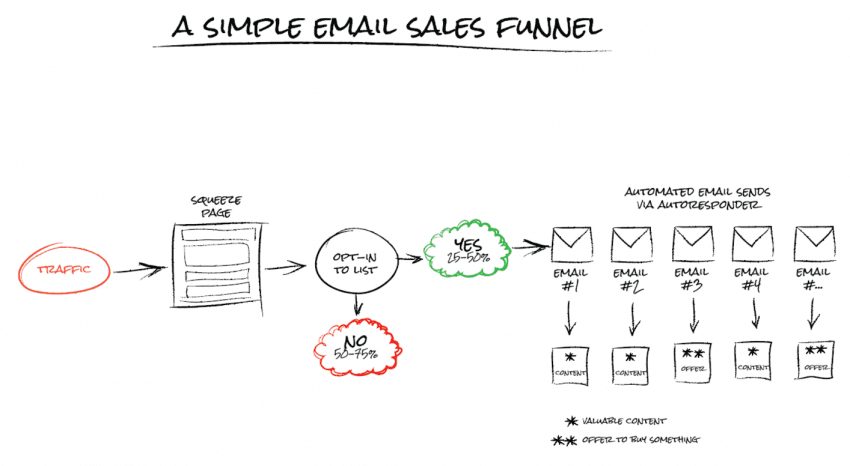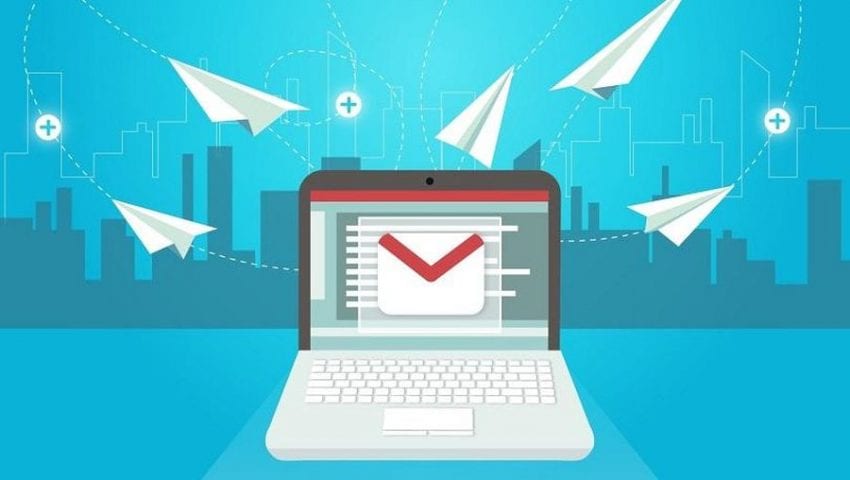Inbound lead generation is the most successful lead generation. Why? Because in most cases the customer is already primed and ready to make a purchase or learn more about you.
Your sales team loves inbound leads, your CEO loves inbound leads. So, how can you get more inbound leads? It starts with setting up email funnels to help convert website visitors into customers.
What is an email funnel?
An email funnel is a method that you use to attract a website visitor, capture their information and move them through a sales pitch. Once you capture their contact details you send them a series of emails in an automated way.
You might have heard of email funnels also referred to as:

- Autoresponders
- Drip Campaigns
- Cadences
- Nurture Sequences
Having automation makes everything sound easy right? Don’t be fooled there is a lot more strategy that you have to put into this if you want to generate solid results.
Leads are not going to respond if you just batch and blast. Customers want to feel valued by your business. You must create a plan to deliver the right message to the right customer at the right time. According to xverify.com, you need to deliver a message that feels personal so that the customer gains trust with you and doesn’t just unsubscribe.
Why you should use an email funnel
Email funnels are ultimately the best way to nurture clients and leads. It allows your brand to stay top of mind and helps you squeeze more engagement out of your email campaigns.
The goal of your initial few emails should be to introduce yourself and set the tone of what is to be expected from your emails. Do not immediately open with a sales pitch. This results in a much more effective campaign that will ultimately drive more sales.
Define goals for your funnels

Part of having a fail-proof strategy means you need to be strategic. You can get creative and put different customers into different nurturing funnels.
Common goals might look like:
- Getting a lead to purchase a specific product or service
- Introduce a lead to your other products or services
- Keeping your brand top of mind
- Tell subscribers about your social media
Once you have your unique goals defined you can group together similar subscribers and push them down the same path.
Examples of email funnels in action
Remember the goal of an email funnel is not to shove sales in the customers face like a used-car salesman. You want to effectively use email marketing to deliver 1-2 pieces of value-added content before you send out your offer.
Imagine you are a graphic design firm. A lead is on your site and opts into your email funnel from a sales page you have on custom logo design.
You might want to set up your funnel to start pushing that customer more content. It would be an excellent opportunity to showcase some of the other logos you’ve designed before.

Feature testimonials, this helps to continue to build trust with your prospect. Then eventually hit them with an email giving them a discount code, as it could be the right time for them to pull the trigger on getting that logo.
Pro-tip: In addition to setting up funnels you should also always send your customers an automated welcome email when they first subscribe to your list.
Put it all together for success
Is your landing page ready for traffic? If you answered yes to that question, then it’s time to start setting up your email funnels. Plan out the goals you want your emails to accomplish then begin building out your nurturing campaign. Once you have that all set you are good to start sending traffic and monitoring the results. Tweak your campaigns as you need to so that you can increase your performance.
Pro Tip: Not all email addresses you collect are legit. Make sure you set up a real-time email verification to prevent fake emails from getting into your funnel.









